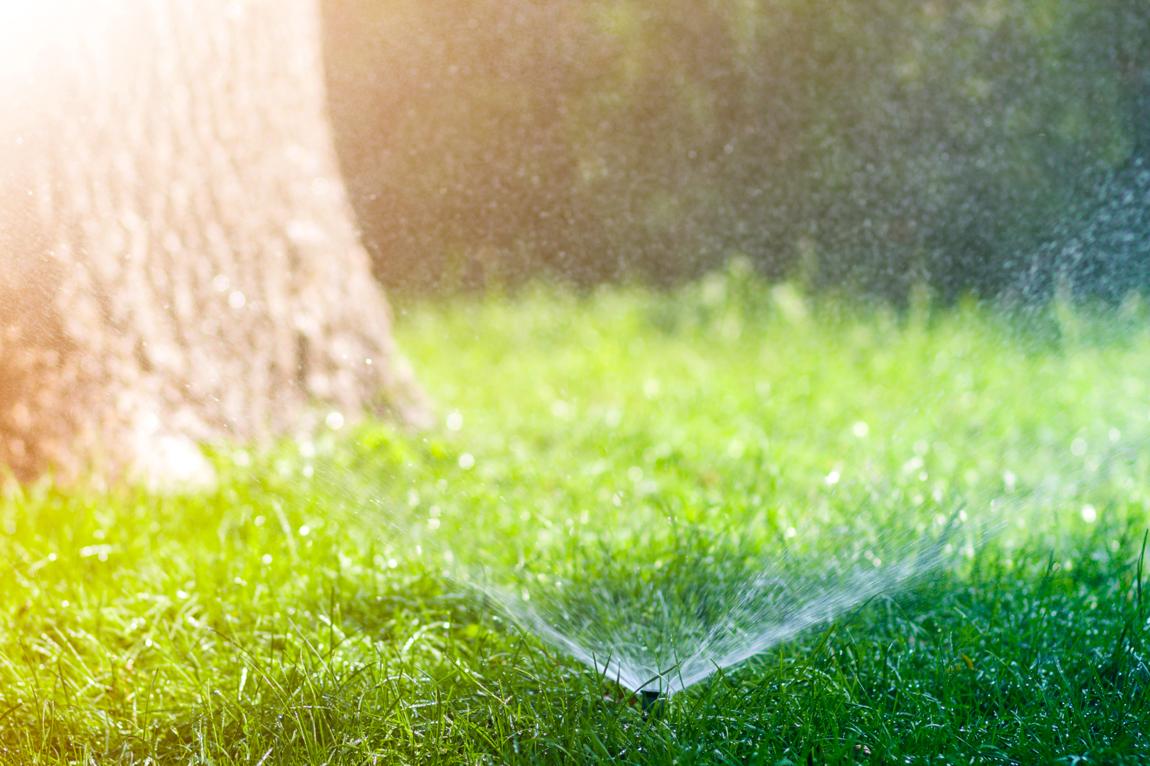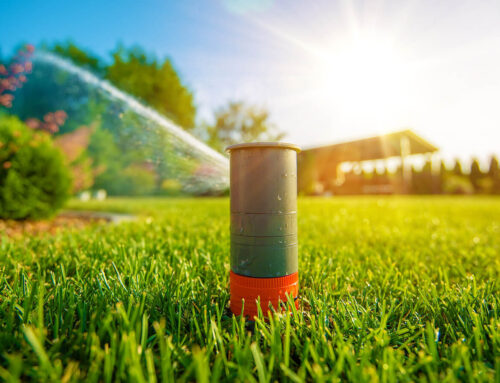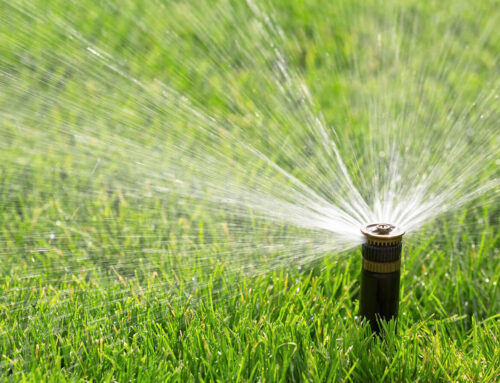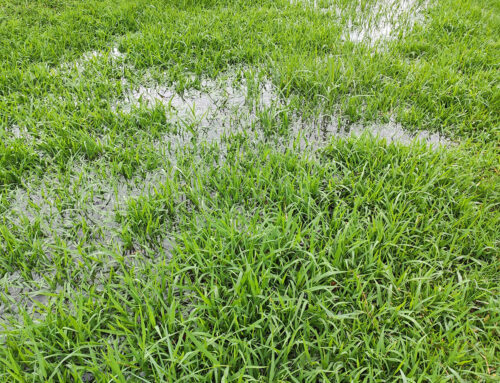Maintaining a lush, green lawn is a source of pride for many homeowners. However, there are many growing concerns about water scarcity and environmental sustainability. According to the United Nations, climate change and the Earth’s water are interconnected. Research from different organizations has revealed that about two billion individuals globally lack access to clean drinking water, and around half of the global population is facing significant water scarcity for at least some portion of the year. These figures are projected to rise, worsened by climate change and population expansion.
Given these circumstances, finding ways to keep our lawns healthy while minimizing water usage is crucial. One of the most significant sources of water consumption in landscaping is lawn sprinklers. We offer residential sprinkler systems to help you nourish your lawn and garden while simultaneously conserving water. Once you grasp all the details of the system, it will feel like your lawn is taking care of itself. But you still need to learn how to converse while watering your lawn.
Here are a few tips and tricks to help you save water and maintain a beautiful lawn with efficient sprinkler use.
The Importance of Water Conservation in Lawn Care
First and foremost, water is a finite resource, and as populations grow and climate change exacerbates water scarcity, responsible water management becomes essential. Lawns can be significant water consumers, particularly in arid and semi-arid regions with limited water resources.
By adopting water-saving strategies in lawn irrigation, homeowners can minimize their water footprint, reduce water bills, and contribute to the overall conservation of water resources.
Efficient water use promotes healthier ecosystems by preserving natural habitats and reducing the strain on water sources, benefiting human and environmental well-being.
Water-Saving Strategies for Your Lawn Sprinklers
Consider these water-saving strategies for your lawn sprinklers.
Choose the Right Sprinkler System
When considering a sprinkler system, opt for smart irrigation technology that adapts watering schedules based on weather conditions, soil moisture levels, and plant needs. Drip irrigation systems are also a wise choice, delivering water directly to the root zone and reducing evaporation and runoff compared to traditional sprinklers.
Choosing the right sprinkler system involves careful consideration of your options. It’s vital that you get your sprinkler installation done by professionals who will use a systematized process. For instance, at EZ Lawn Sprinklers, we will start by reviewing your property and analyzing your needs. Once you review your land, we will offer you a free, no-obligation quote. If you decide to proceed with our services, we will walk you through the entire process and ensure you are fully aware of what you are receiving and the associated costs.
Maintain Your Sprinkler System
Regular maintenance of your sprinkler system is essential to prevent water waste. Inspect your system regularly for leaks, clogs, or damaged components that can lead to inefficient water usage. Clean or replace clogged nozzles to ensure even water distribution, and adjust sprinkler heads to avoid watering sidewalks, driveways, or other non-landscaped areas.
Schedule Watering Wisely
To minimize water loss, water your lawn during the early morning hours when evaporation rates are lowest and winds are calm. Avoid watering during the hottest parts of the day to reduce evaporation.
Adjust your watering schedule seasonally to align with the changing water needs of your lawn throughout the year.
Consider Soil and Plant Needs
Understanding your soil’s composition and water retention capabilities is crucial for efficient watering. Conduct a soil test to determine your soil type and choose drought-tolerant grass and plants that require less water to thrive in your climate. Group plants with similar water needs together to ensure efficient irrigation.
Use Water-Saving Features
Install rain sensors that automatically shut off your sprinkler system during rain events, preventing overwatering. Soil moisture sensors provide real-time data on soil moisture levels, allowing you to adjust watering schedules accordingly. Weather-based irrigation controllers adjust watering schedules based on local weather forecasts, optimizing water usage.
Practice Water-Saving Techniques
Implement cycle and soak watering techniques to reduce runoff and improve water penetration into the soil. This involves gradually breaking up watering sessions into shorter intervals, allowing water to soak into the soil. Mulching your lawn and garden beds helps retain soil moisture, suppress weed growth, and insulate plant roots from temperature extremes.
Use a hose with a shut-off nozzle to water specific areas specifically rather than the entire lawn unnecessarily.
Monitor Water Usage
Keep track of your water usage and utility bills to identify any spikes in water consumption. Utilize water usage monitoring tools or smart irrigation apps to track and manage your sprinkler system remotely. Adjust your watering schedule and irrigation settings based on observed water usage patterns and feedback from monitoring tools.
Maintenance Tips for Optimal Water Efficiency
Once you’re familiar with the different ways you can save water, take the time to maintain your sprinklers to avoid wasting water in the future.
Regularly Inspect & Maintain Sprinkler Heads
Regular inspection and maintenance of sprinkler heads are vital to ensure efficient water distribution across your lawn. Over time, sprinkler heads may become clogged with debris or misaligned, resulting in uneven watering and water wastage. Regularly inspecting and cleaning sprinkler heads can maintain optimal performance and prevent water loss.
We offer thorough sprinkler service and maintenance to make every effort to solve all your problems. A lawn sprinkler system typically needs maintenance twice annually: in spring for activation and in fall for winter preparation. You can rest assured that we will assist you from installation to repair and ensure you don’t have to stress about maintenance.
Checking for Leaks & Repair Promptly
Checking for leaks and repairing them promptly is essential for conserving water and preventing damage to your irrigation system. Even small leaks can lead to significant water wastage over time. Inspect your system regularly for signs of leaks, such as puddles or wet spots in the lawn, and address any issues promptly to minimize water loss.
Update System Settings Based on Seasonal Changes
Updating system settings based on seasonal changes helps align your watering schedule with your lawn’s varying water needs throughout the year. During hot summer months, for example, you may need to increase watering frequency to prevent your lawn from drying out.
In cooler seasons or periods of rainfall, you can reduce watering frequency to avoid overwatering and promote healthy root growth.
Incorporating Drought-Resistant Landscaping
Drought-resistant landscaping, such as native plants and grasses, can significantly reduce water usage in your lawn. These plants are well-adapted to local climate conditions and require minimal irrigation once established.
By replacing water-intensive turfgrass with drought-resistant alternatives, you can conserve water, lower maintenance requirements, and create a more sustainable landscape.
Conclusion
Implementing these water-saving strategies for your lawn sprinklers can reduce water waste, lower your water bills, and contribute to environmental conservation efforts. Whether upgrading to a smart sprinkler system, scheduling watering wisely, or practicing water-saving techniques, every effort counts towards sustainable lawn care practices.






